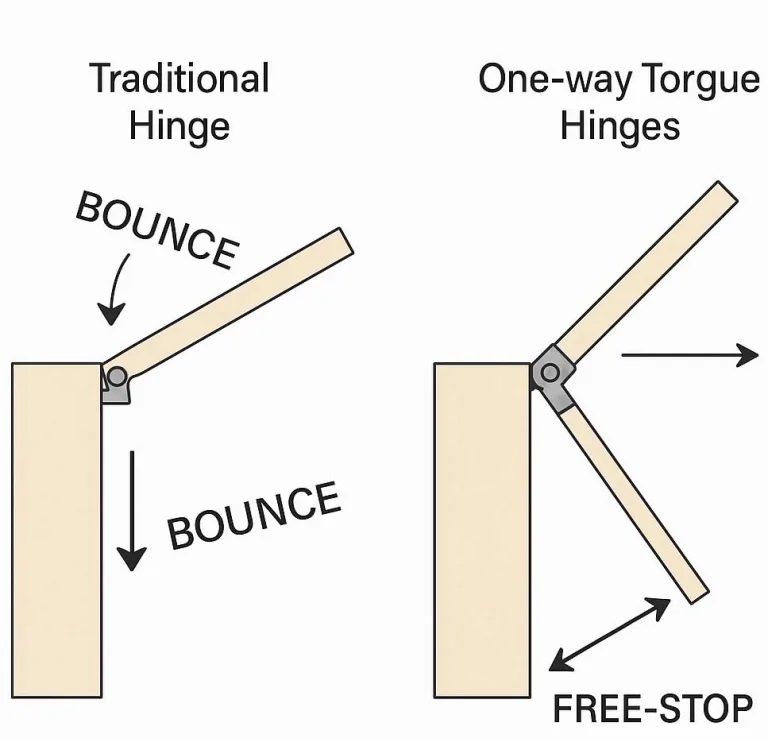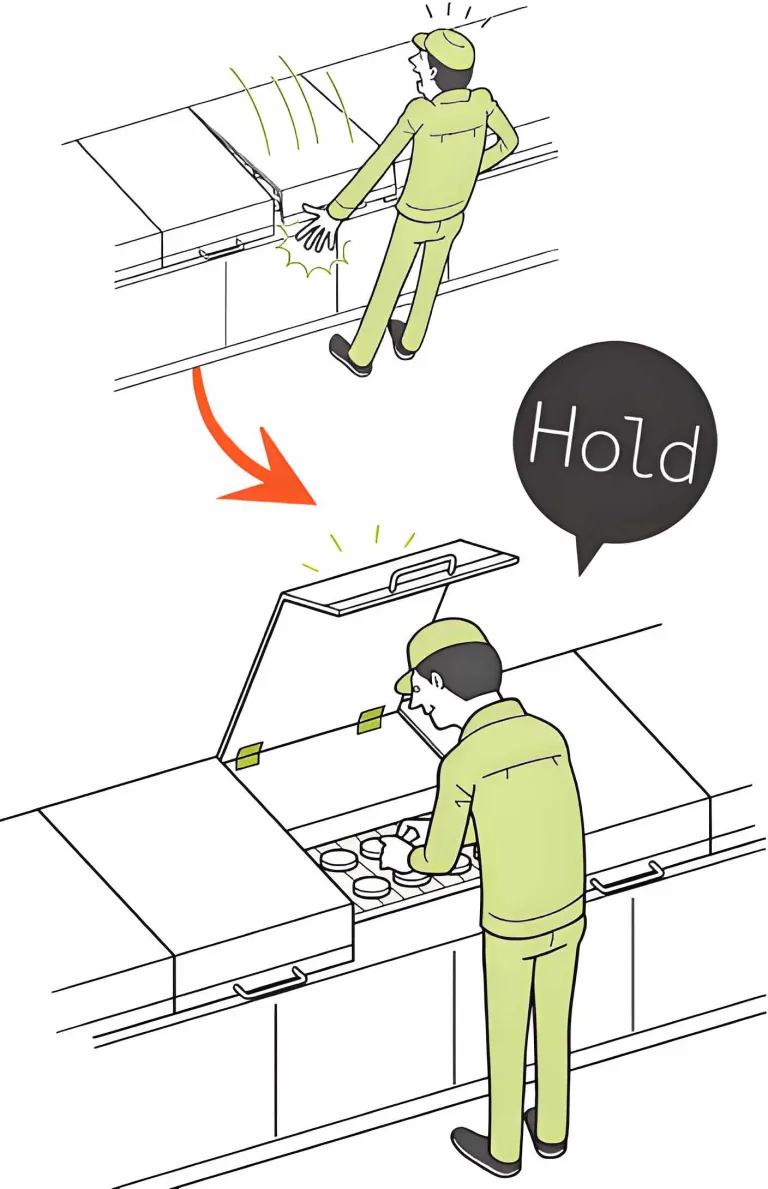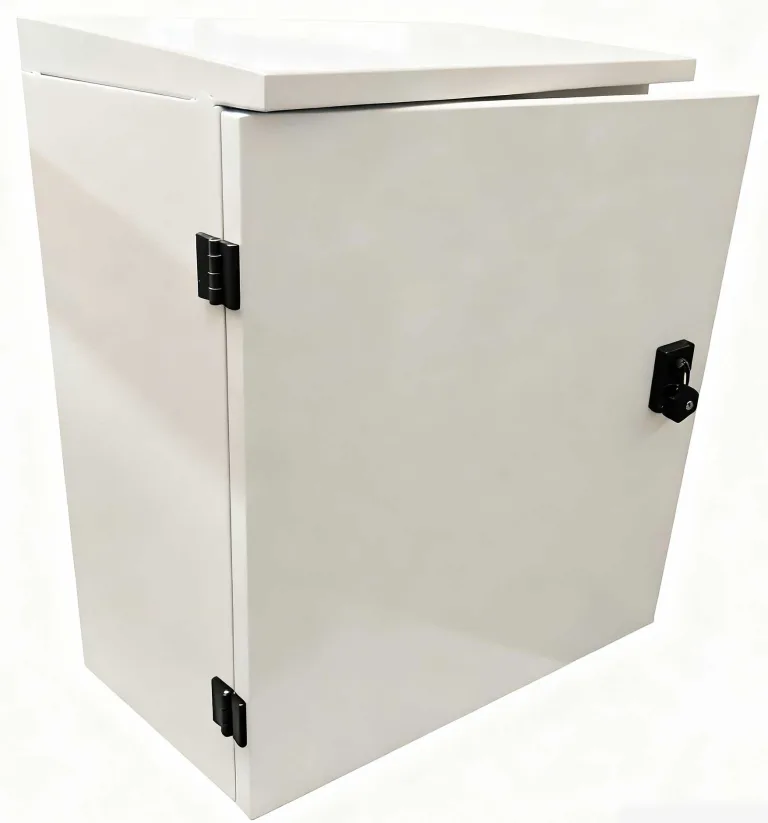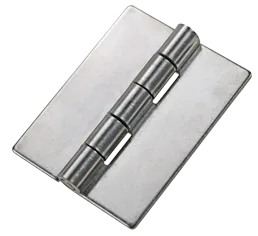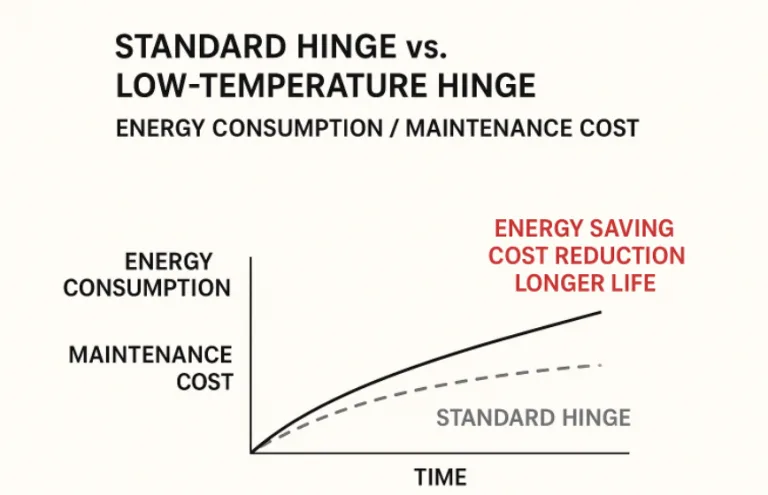What Are Adjustable Torque Hinges for Electronic Devices and How Are They Used
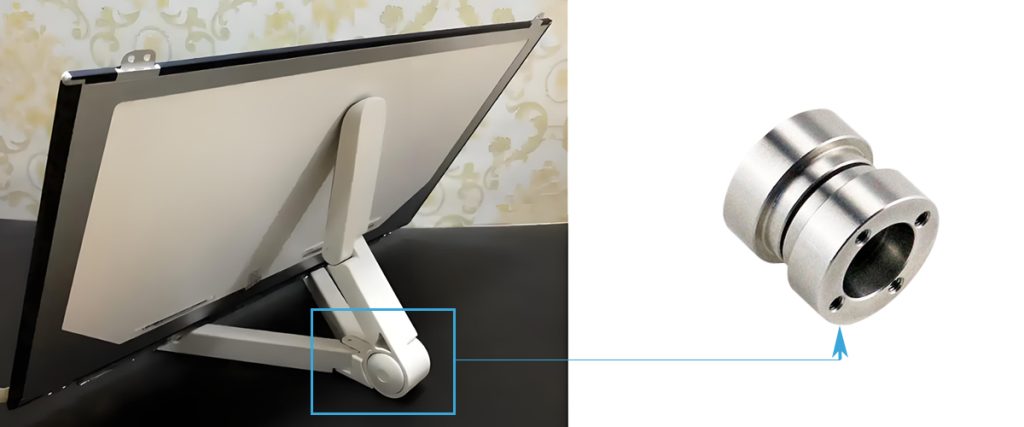
Adjustable torque hinges, also known as friction or position control hinges, let you hold panels, lids, or screens steady at any angle. These hinges use adjustable resistance, making heavy panels feel much lighter and easier to move. For example, you can see in the table below how these hinges reduce the effort needed to lift or position parts:
| Application / Example | Original Effort / Weight | Reduced Effort / Equivalent Weight |
|---|---|---|
| Opening a 200-lb engine hood | 200 lb | 10 lb |
| Opening a heavy door | 60 lb | 3 lb |
| Opening an 80-lb panel | 80 lb | 5 lb |
You will notice that adjustable torque hinges for electronic devices improve comfort and safety by allowing smooth, controlled movement. They help prevent sudden slamming and make devices easier and safer for you to use.
Key Takeaways
- Adjustable torque hinges let you hold panels or screens steady at any angle by using friction and adjustable resistance.
- You can easily change the hinge’s resistance with a screw to match the weight and balance of your device for smooth, safe movement.
- These hinges improve comfort and safety by reducing effort, preventing sudden slamming, and making devices easier to use.
- They are widely used in laptops, medical equipment, industrial panels, and smart devices, offering long-lasting durability and design flexibility.
- Choosing the right hinge means matching its torque range to your panel’s weight and keeping it well-maintained for the best performance.
What Are Adjustable Torque Hinges (Adjustable torque hinges for electronic devices)
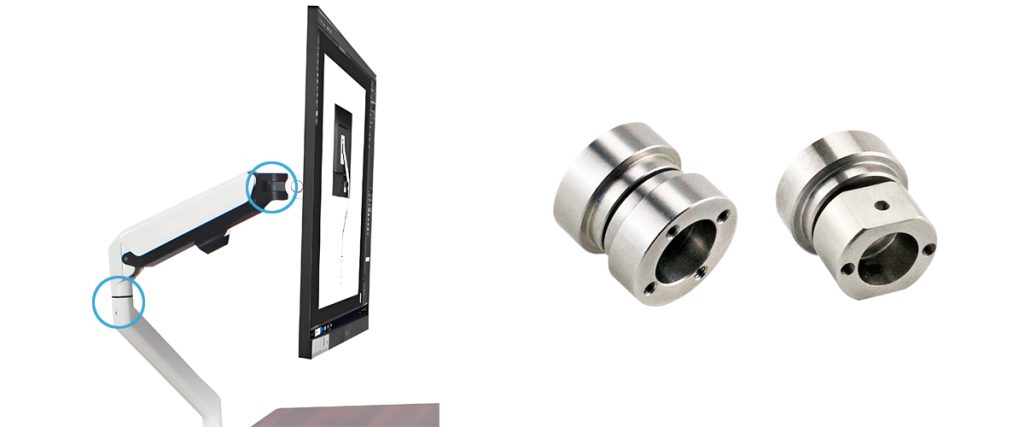
Key Features
You may hear adjustable torque hinges called friction hinges or position control hinges. These hinges help you control how much force you need to move or hold a panel, lid, or screen. You can use them in many electronic devices. They use special internal parts, like plastic washers or polymer pads, to create friction. This friction gives you resistance when you try to move the hinge.
You can see the main types and their features in the table below:
| Hinge Type | How It Works | Adjustment Feature | Where You Use It |
|---|---|---|---|
| Torque Hinges (Friction Hinges) | Use friction to resist rotation. | Some have adjustable screws | Panels, lids, doors in electronics and industry |
| Adjustable Torque Hinges | Have a screw to change the torque. | Single torque adjustment screw | Machinery panels, covers, doors |
| Constant Torque Hinges | Keep the same torque all the time. | Fixed torque, no adjustment | Medical equipment, lightweight cabinet doors |
| Adjustable Torque Hinge with Pin Screw | Heavy-duty, holds position with adjustable torque. | Torque adjustable via pin screw | Bonnets, lids, access panels, display devices |
You can adjust the torque by turning a screw on the hinge. This lets you set how easy or hard it is to move the panel. Most adjustable torque hinges for electronic devices use a single screw for this. You can use a hex key or similar tool to make the adjustment. This feature helps you match the hinge to the weight and balance of your device.
Tip: If you want your panel to stay in place at any angle, make sure the resistive torque of the hinge is higher than the force from the panel.
Adjustable torque hinges for electronic devices often use strong materials, like steel or zinc alloy, to last longer. Some models use high-viscosity fluids inside to reduce wear and make movement smoother. You can find these hinges in many sizes and torque ranges, so you can pick the right one for your project.
Position Control
Position control is the main reason you use adjustable torque hinges for electronic devices. These hinges let you stop a panel or screen at any angle you want. You do not need extra hardware to hold it open. The hinge keeps steady resistance through its whole range of motion, usually up to 180 degrees. Some special models can even rotate 360 degrees.
You can see how different hinges compare in the table below:
| Hinge Type | Description | Torque Adjustment Method | Torque Range (in-lb) | Applications |
|---|---|---|---|---|
| Adjustable Friction Hinge | Lets you change torque by turning a screw on the hinge shaft. Also called position control hinges. | Screw adjustment at hinge shaft | Varies by model | Panels, doors, lids in electronics |
| Constant Torque Hinge | Gives the same torque all the time, holds position without extra parts. | Fixed torque, no adjustment | 0.5 – 20 | Medical equipment, LCDs, covers |
| SB-188 Series | Fixed torque, used in medical equipment and small LCDs. | Fixed torque | 0.5 – 14 | Medical devices, safety guards |
| ZC-250 Series | 360° rotation, holds position at any point, very durable. | Fixed torque | 5 – 17 | Medical devices, displays |
When you use adjustable torque hinges for electronic devices, you get smooth and predictable movement. You do not have to worry about panels slamming shut or springing open. This makes your devices safer and easier to use. You can also adjust the hinge if you change the weight of your panel or want a different feel.
- You can use these hinges in laptops, monitors, medical devices, and industrial panels.
- You can mount them with standard screws, like M4 or #8, for easy installation.
- You can choose from different finishes, such as black paint or galvanized, to match your device.
With adjustable torque hinges for electronic devices, you get full control over how your device moves and stays in place. This makes them a smart choice for many electronic and industrial products.
How They Work
Mechanism
You will find that adjustable torque hinges use clever internal parts to control movement. Inside the hinge, you often see friction plates, springs, or even special damping systems. These parts create resistance when you try to move the hinge. This resistance is what keeps your panel or screen steady at any angle.
- The friction can come from different designs:
- Some hinges use discs that press against each other.
- Others use a curled spring sheet inside the hinge shaft.
- Some have a shaft that fits tightly inside a plastic pipe.
You can also find hinges that use high-viscosity fluids. These fluids help reduce wear and make the movement smoother. The main goal is to give you smooth, controlled motion every time you move the panel.
Research shows that these mechanisms can deliver steady torque across the full range of motion. For example, studies on constant-torque flexure hinges found that the torque output stays consistent, with only about a 5% difference between theory and real-world tests. This means you can trust the hinge to hold your device in place, whether you open it a little or a lot.
Adjustability
You can easily adjust the resistance in most torque hinges. Most models have a single adjustment screw. You use a hex key or spanner to turn this screw and set the torque to your liking. This lets you match the hinge to the weight and balance of your device.
Manufacturers like MISUMI and Sugatsune provide clear torque ranges for their adjustable hinges. For example, you might see a hinge with a torque range from 0 to 4.9 N·m. You can set the hinge anywhere within this range. Some hinges even come with instructions for adjusting the torque, so you get the exact feel you want.
You will notice that torque hinges often have a small tolerance in their settings. This means you can fine-tune the resistance for the best user experience. You can always change the setting later if you change the panel or want a different feel.
Tip: Always check the manufacturer’s instructions before adjusting the torque. This helps you avoid over-tightening and keeps your hinge working smoothly.
With these features, adjustable torque hinges give you reliable, customizable control for your electronic devices.
Main Uses
Electronic Devices
You see adjustable torque hinges in many electronic devices around you. These hinges help you open and hold screens, lids, or panels at any angle you want. You do not need to worry about screens falling or slamming shut. The hinge keeps everything steady and safe.
Here are some common electronic devices that use these hinges:
- Laptops: You can open your laptop screen to any angle. The hinge holds it in place, so you get the best view.
- Monitors and Display Devices: You can tilt or rotate the screen for comfort. The hinge keeps the screen steady, even if you move your desk or chair.
- Tablets with Stands: Some tablets have stands with adjustable torque hinges. You can set the angle for drawing, reading, or watching videos.
- Smart Home Panels: Control panels in smart homes often use these hinges. You can open the panel for maintenance and it stays in place.
- Camera Equipment: Adjustable hinges help you position screens or covers on cameras and lighting gear.
Note: Adjustable torque hinges for electronic devices make your devices easier to use. You can adjust the angle without extra tools or supports.
These hinges also protect your devices. They stop panels from slamming shut, which can break screens or pinch your fingers. You get a safer and more comfortable experience every time you use your device.
Industrial and Medical Applications
You find adjustable torque hinges in many industrial and medical settings. These places need strong, reliable hinges that can handle heavy use. The hinges must also allow for precise control and easy cleaning.
Some main uses include:
- Industrial Panels and Access Doors: You can open heavy panels or doors and they stay open. This makes repairs and inspections safer and faster.
- Control Systems: Many machines have control panels with these hinges. You can adjust the panel for the best view and reach.
- Medical Equipment: Devices like surgical tables, diagnostic machines, and monitor arms use these hinges. You can move parts smoothly and hold them steady for doctors and nurses.
- Laboratory Devices: Hinges help you open covers or shields on lab equipment. The cover stays in place, so you can work safely.
You can see how important these hinges are in the table below:
| Aspect | Details |
|---|---|
| Market Share of Adjustable Torque Hinges | About 30% of all torque hinges, showing wide use in many industries. |
| Medical Devices Market Share | Around 13%, used in surgical and diagnostic equipment for precision and hygiene. |
| Industrial Equipment Market Share | About 12%, found in access panels and control systems for strength and reliability. |
| Torque Range Usage | Medium and low torque hinges are common for controlled motion and positioning. |
| Performance Characteristics | Adjustable resistance, long life, ergonomic benefits, and high durability. |
| Application Benefits | Improves comfort, control, and safety for users in both sectors. |
You get many benefits from using these hinges in industrial and medical devices. The hinges let you fine-tune the resistance, so you can match the weight and use of each panel. You also get a long-lasting product that works well even after thousands of uses.
Tip: Always choose a hinge with the right torque range for your application. This helps you get smooth movement and keeps your equipment safe.
Benefits
Ergonomics
You will notice a big difference in comfort when you use adjustable torque hinges. These hinges let you move panels or screens with less effort. Ergonomic studies show that measuring the force needed to open a door or panel helps you understand how hard it is for users. When you lower the operating torque, you make it easier for everyone, including people with less strength. This means you can open and hold panels without getting tired. Adjustable torque hinges help you match the resistance to your needs, so you feel less strain and enjoy better accessibility. This supports universal design, making devices easier for all users.
Tip: Lowering the torque on your device can help reduce fatigue and make daily tasks more comfortable.
Safety
Adjustable torque hinges keep your devices safe and reliable. You can see the improvements in the table below:
| Scenario / Metric | Traditional Hinges | Adjustable Torque Hinges | Benefit |
|---|---|---|---|
| Hinge failure rate (extreme cold) | 3.2 failures per year | 0 failures in 12 months | No brittle fractures |
| Maintenance cost | Baseline | 50% lower | Longer replacement cycle |
| Corrosion failure (salt spray test) | 100% failure after 5000 hrs | 0% failure | 90% lower maintenance cost |
| Vibration resistance (20G load) | 50,000 fractures | 500,000 crack-free cycles | 900% longer service life |
| Temperature expansion rate | >0.8% | <0.1% | No sealing failure risk |
You can trust these hinges to hold panels steady and prevent sudden slamming. The consistent torque keeps screens or lids from closing by accident. This reduces the risk of injury and damage to your devices.
Design Flexibility
You get more design options with adjustable torque hinges. You can set the torque to fit different weights and sizes. This means you can use the same hinge for left-handed or right-handed users. You can also adjust the hinge if you change the panel or want a different feel. The steady position control lets you stop a panel at any angle, so you do not need extra supports. This flexibility helps you create safer, more user-friendly products for many applications.
Selection Guide
Key Factors
When you choose an adjustable torque hinge, you need to match the hinge to your device. Start by checking the weight of your panel or door. Use this formula to find the door moment:
Door Moment (N·m) = Distance from hinge to center of gravity (m) × Weight (kg) × 9.81
For example, if your panel weighs 0.8 kg and the center of gravity is 0.2 meters from the hinge, the door moment is about 1.57 N·m. Pick a hinge with a torque range that covers this value. Always make sure the upper limit of the hinge’s torque is equal to or greater than the door moment. This helps your panel stay in place at any angle.
You should also check the torque tolerance. If a hinge has a ±20% tolerance, the lowest torque must still be higher than the minimum needed. Test the hinge with your actual device to make sure it feels right. Look for hinges made from strong materials if you need extra durability.
Application Tips
You can use adjustable torque hinges for electronic devices in many places, like laptops, medical devices, or industrial panels. For easy installation, use standard screws such as M4 or #8. Make sure the mounting holes on your device match the hinge.
Tip: Always install the hinge on a flat, clean surface. This gives you the best performance and keeps the hinge working smoothly.
If you want to adjust the torque, use a hex key or spanner. Turn the adjustment screw a little at a time. Test the panel after each change. Do not over-tighten the screw, as this can damage the hinge.
Maintenance
Keep your hinges working well by checking them often. Wipe off dust and dirt with a soft cloth. If you hear squeaking or feel rough movement, add a small drop of lubricant to the moving parts.
- Check the torque setting every few months, especially if you use the device a lot.
- Tighten any loose screws right away.
- Replace the hinge if you see cracks or if it does not hold the panel steady.
Note: Regular care helps your adjustable torque hinges for electronic devices last longer and keeps your device safe.
You can see how adjustable torque hinges for electronic devices play an important role in modern devices. These hinges use friction to hold panels steady at any angle. You get safer, cleaner, and more efficient designs.
- You do not need extra supports, so you save space inside your device.
- You can adjust the torque for comfort and safety.
- Special materials help the hinge last longer, even in tough conditions.
When you choose a hinge, match the torque to your panel and think about the environment. Consider adjustable torque hinges for electronic devices for your next project to improve both safety and usability.
FAQ
What is the main purpose of an adjustable torque hinge?
You use an adjustable torque hinge to hold a panel, lid, or screen at any angle you want. This hinge gives you control and keeps your device safe from sudden movement.
How do you adjust the torque on these hinges?
You turn the adjustment screw with a hex key or spanner. This changes the resistance. Always follow the manufacturer’s instructions for the best results.
Can you use adjustable torque hinges outdoors?
Some models work outdoors. You should choose a hinge made from stainless steel or with a weather-resistant coating. Always check the product details before installing outside.
What should you do if the hinge feels loose or squeaks?
Clean the hinge with a soft cloth. Add a small drop of lubricant if needed. Tighten any loose screws. Replace the hinge if it still does not work well.


